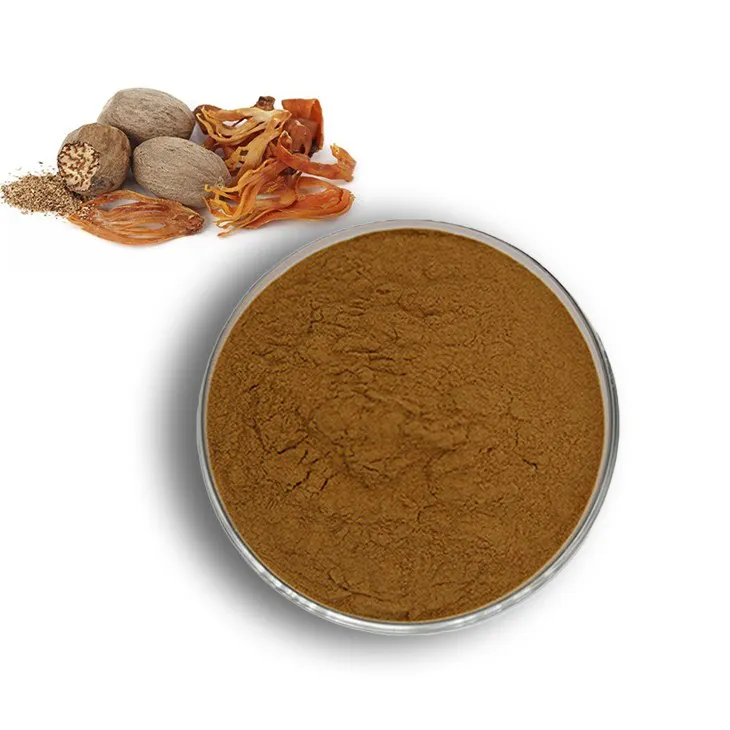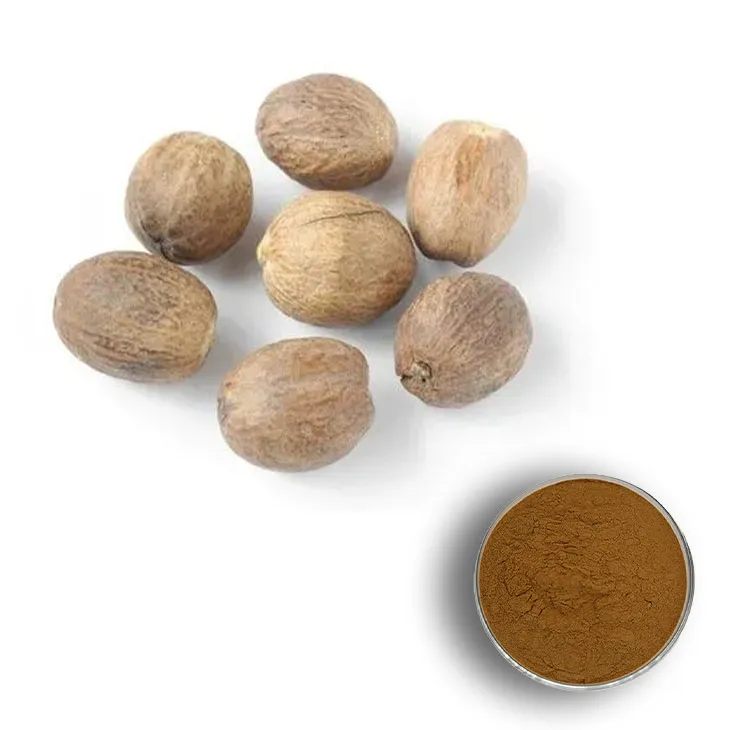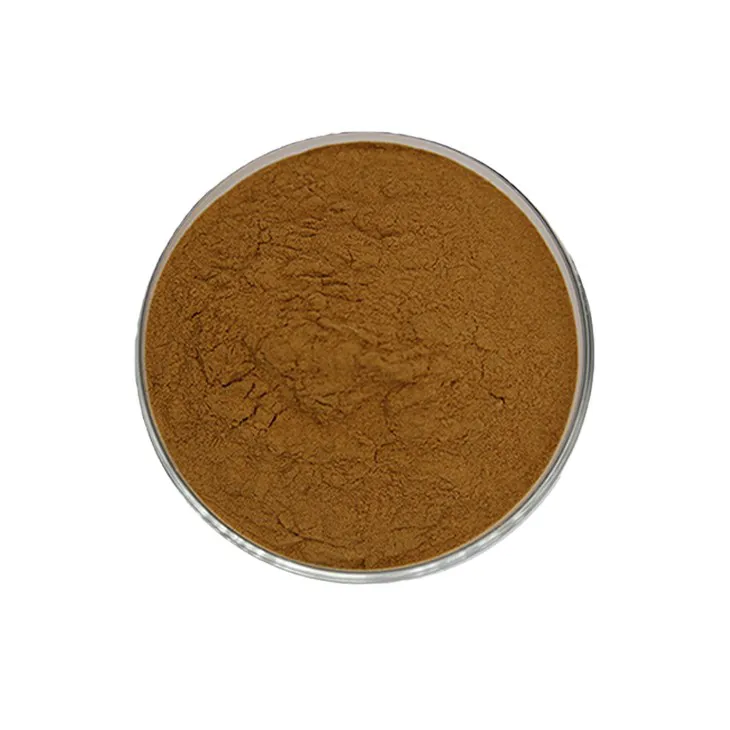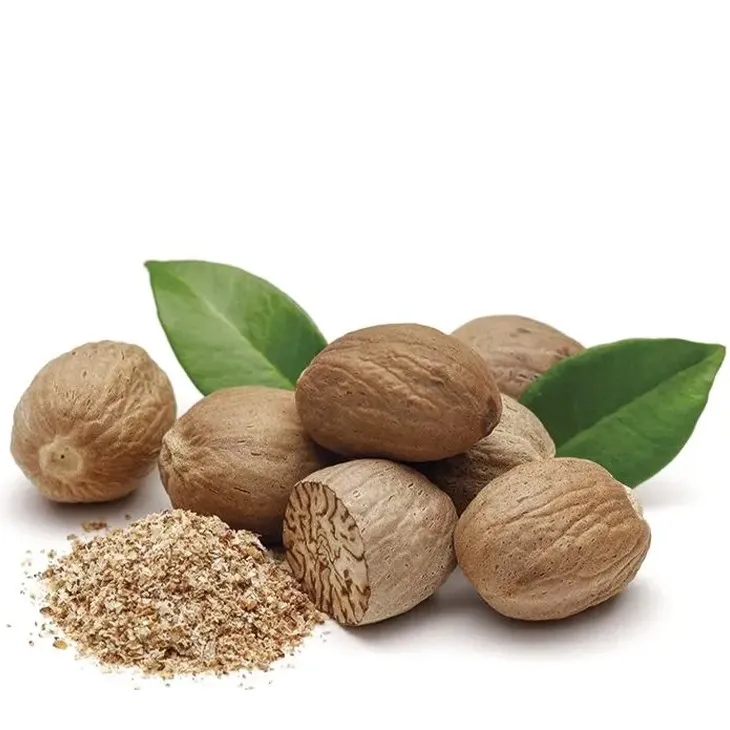- 0086-571-85302990
- sales@greenskybio.com
The best method for extracting nutmeg extract.
2024-11-27

1. Introduction
Nutmeg, a spice derived from the seed of the Myristica fragrans tree, has been used for centuries in culinary, medicinal, and cosmetic applications. The extraction of Nutmeg Extract is of great significance as it contains various bioactive compounds such as myristicin, elemicin, and safrole. These compounds are responsible for the unique flavor, aroma, and potential health benefits associated with nutmeg. In this article, we will explore different extraction methods, analyzing their advantages and disadvantages in terms of yield, quality, and environmental impact.

2. Traditional Solvent Extraction
2.1 Principle
Traditional solvent extraction is one of the most common methods for extracting Nutmeg Extract. It involves the use of organic solvents such as ethanol, hexane, or ethyl acetate to dissolve the desired compounds from the nutmeg powder. The principle behind this method is based on the solubility of the target compounds in the solvent.
2.2 Procedure
- First, the nutmeg seeds are dried and ground into a fine powder.
- Then, the powder is mixed with the selected solvent in a suitable ratio, usually in a flask or a Soxhlet extractor.
- The mixture is allowed to stand or is refluxed for a certain period, depending on the extraction efficiency required.
- After that, the solvent is evaporated, either under reduced pressure or by simple distillation, to obtain the Nutmeg Extract.
2.3 Yield and Quality
- In terms of yield, solvent extraction can generally achieve a relatively high extraction rate, especially when using appropriate solvents and extraction conditions. For example, ethanol extraction can extract a significant amount of the essential oils and bioactive compounds present in nutmeg.
- However, the quality of the extract may be affected by the presence of residual solvents. Even after evaporation, small amounts of solvents may remain in the extract, which could be a concern for applications in the food and pharmaceutical industries.
2.4 Environmental Impact
- The use of organic solvents in large quantities can have a negative environmental impact. Solvents such as hexane are volatile organic compounds (VOCs) that can contribute to air pollution if not properly managed.
- Additionally, the disposal of used solvents requires proper treatment to prevent environmental contamination.

3. Supercritical Fluid Extraction (SFE)
3.1 Principle
Supercritical fluid extraction utilizes a supercritical fluid, most commonly carbon dioxide (CO₂), as the extraction solvent. A supercritical fluid has properties between those of a liquid and a gas. It has a high diffusivity like a gas and a high density like a liquid, which allows it to penetrate and dissolve the target compounds effectively from the nutmeg matrix.
3.2 Procedure
- The nutmeg sample is placed in an extraction vessel.
- Carbon dioxide is pressurized and heated above its critical point (31.1 °C and 73.8 bar) to form a supercritical fluid.
- The supercritical CO₂ is then passed through the nutmeg sample, extracting the desired compounds.
- By adjusting the pressure and temperature, the selectivity of the extraction can be controlled.
- Finally, the supercritical fluid is depressurized, and the extracted compounds are collected.
3.3 Yield and Quality
- SFE can provide a high - quality extract with a relatively high yield. Since CO₂ is a non - polar solvent, it is particularly effective in extracting non - polar compounds such as essential oils in nutmeg. The selectivity of SFE can also be adjusted to target specific compounds, resulting in a more purified extract.
- Moreover, because CO₂ is a gas at normal conditions, it leaves no residual solvent in the extract, which is highly desirable for applications in the food, pharmaceutical, and cosmetic industries.
3.4 Environmental Impact
- Supercritical fluid extraction using CO₂ has a relatively low environmental impact. CO₂ is a natural and non - toxic gas, and it can be easily recycled during the extraction process.
- However, the initial investment for SFE equipment is relatively high, which may limit its widespread use in small - scale operations.

4. Steam Distillation
4.1 Principle
Steam distillation is based on the principle that when a mixture of water and an immiscible organic compound (such as the essential oils in nutmeg) is heated, the total vapor pressure of the system is equal to the sum of the vapor pressures of the individual components. As a result, the organic compound can be distilled along with the steam at a temperature lower than its normal boiling point.
4.2 Procedure
- The nutmeg powder or pieces are placed in a distillation apparatus along with water.
- The mixture is heated, and the steam generated carries the volatile compounds (essential oils) from the nutmeg.
- The steam - oil mixture is then condensed, and the oil is separated from the water, usually by using a separating funnel.
4.3 Yield and Quality
- Steam distillation can effectively extract the essential oils from nutmeg, but the yield of other bioactive compounds may be relatively low compared to solvent extraction or SFE. The quality of the essential oil obtained is relatively pure, but it may lack some of the more polar or water - soluble compounds present in nutmeg.
4.4 Environmental Impact
- This method has a relatively low environmental impact as it mainly uses water as the extraction medium. However, the energy consumption during the heating process can be a concern, especially for large - scale production.

5. Microwave - Assisted Extraction (MAE)
5.1 Principle
Microwave - assisted extraction utilizes microwave energy to heat the extraction solvent and the nutmeg sample simultaneously. The microwaves interact with the polar molecules in the solvent and the sample, causing rapid heating and enhancing the mass transfer of the target compounds from the nutmeg into the solvent.
5.2 Procedure
- The nutmeg sample is mixed with the solvent in a microwave - safe container.
- The mixture is placed in a microwave oven, and the extraction is carried out at a specific power level and time.
- After extraction, the mixture is filtered to separate the extract from the solid residue.
5.3 Yield and Quality
- MAE can significantly reduce the extraction time compared to traditional methods, while still achieving a relatively high yield. The quality of the extract can be comparable to that of solvent extraction, but it may also be affected by the potential degradation of some heat - sensitive compounds due to the rapid heating process.
5.4 Environmental Impact
- Microwave - assisted extraction has the potential to be more energy - efficient compared to some traditional extraction methods, especially when optimized extraction conditions are used. However, the use of microwave ovens and associated equipment also requires energy consumption.
6. Comparison and Conclusion
6.1 Comparison
| Extraction Method | Yield | Quality | Environmental Impact |
|---|---|---|---|
| Traditional Solvent Extraction | High, but affected by solvent choice and extraction conditions | Residual solvent may be a problem; can extract a wide range of compounds | High due to use of organic solvents and potential for pollution |
| Supercritical Fluid Extraction | High | High - quality, no residual solvent; can be selective | Low, but high initial investment |
| Steam Distillation | Moderate for essential oils, low for other compounds | Pure essential oil, but may lack some compounds | Low, but high energy consumption |
| Microwave - Assisted Extraction | High with reduced extraction time | May have some degradation of heat - sensitive compounds | Moderate, potentially energy - efficient |
6.2 Conclusion
- Each extraction method has its own advantages and disadvantages in terms of yield, quality, and environmental impact. The choice of the best extraction method depends on various factors such as the intended application of the nutmeg extract (food, pharmaceutical, cosmetic), the scale of production, and the economic considerations.
- For applications where high - quality, solvent - free extracts are required, supercritical fluid extraction may be the preferred method despite its high initial investment. For small - scale or traditional applications where cost is a major factor and some residual solvent may be acceptable, traditional solvent extraction can be considered. Steam distillation is suitable for the extraction of essential oils mainly, and microwave - assisted extraction offers a fast and potentially efficient alternative with some trade - offs in terms of compound degradation.
FAQ:
What are the common methods for extracting nutmeg extract?
Some common methods for extracting nutmeg extract include solvent extraction, steam distillation, and supercritical fluid extraction. Solvent extraction involves using solvents like ethanol or hexane to dissolve the active compounds from nutmeg. Steam distillation uses steam to vaporize the volatile components, which are then condensed. Supercritical fluid extraction typically uses carbon dioxide in a supercritical state to extract the desired substances.
How does solvent extraction affect the yield of nutmeg extract?
The yield in solvent extraction can be influenced by several factors. The choice of solvent is crucial. For example, ethanol can extract a wide range of compounds from nutmeg, but the solubility of different components varies. If the solvent has a high affinity for the active compounds in nutmeg, a relatively high yield can be obtained. However, improper solvent - to - nutmeg ratio, extraction time, or temperature can reduce the yield. Also, some solvents may not be able to extract all the valuable components, thus affecting the overall yield.
What are the quality aspects to consider in nutmeg extract extraction?
When it comes to quality in nutmeg extract extraction, the purity of the extract is a major factor. The extraction method should be able to isolate the desired active compounds without introducing contaminants. For example, in solvent extraction, if the solvent is not completely removed during the purification process, it can affect the quality. The chemical composition of the extract should match the expected profile of nutmeg's beneficial components. Additionally, factors like oxidation during extraction can degrade the quality of the extract. Maintaining the integrity of the volatile oils and other bioactive substances is essential for high - quality nutmeg extract.
How does steam distillation impact the environmental compared to other methods?
Steam distillation generally has some environmental advantages compared to some solvent - based extraction methods. Since it mainly uses steam as the medium for extraction, it does not involve the use of potentially harmful organic solvents that can pose environmental risks such as soil and water pollution. However, steam distillation requires a significant amount of energy to generate steam, which can have an environmental impact in terms of energy consumption and associated greenhouse gas emissions. In contrast, solvent extraction may have issues with solvent disposal, but can sometimes be more energy - efficient depending on the process.
What are the challenges in supercritical fluid extraction of nutmeg extract?
One of the main challenges in supercritical fluid extraction of nutmeg extract is the high cost associated with the equipment required for maintaining the supercritical state of the fluid, typically carbon dioxide. The process also requires precise control of parameters such as pressure and temperature to ensure optimal extraction. Another challenge is that the extraction efficiency may not be as high as expected for all components of nutmeg. Additionally, scale - up of the supercritical fluid extraction process can be difficult and costly, which may limit its widespread commercial application in nutmeg extract extraction.
Related literature
- Nutmeg Extract: Composition, Properties, and Extraction Techniques"
- "Advanced Methods in Nutmeg Extract Isolation: A Review"
- "Environmental and Quality Considerations in Nutmeg Extract Extraction Processes"
- ▶ Hesperidin
- ▶ citrus bioflavonoids
- ▶ plant extract
- ▶ lycopene
- ▶ Diosmin
- ▶ Grape seed extract
- ▶ Sea buckthorn Juice Powder
- ▶ Beetroot powder
- ▶ Hops Extract
- ▶ Artichoke Extract
- ▶ Reishi mushroom extract
- ▶ Astaxanthin
- ▶ Green Tea Extract
- ▶ Curcumin Extract
- ▶ Horse Chestnut Extract
- ▶ Other Problems
- ▶ Boswellia Serrata Extract
- ▶ Resveratrol Extract
- ▶ Marigold Extract
- ▶ Grape Leaf Extract
- ▶ blog3
- ▶ blog4
-
Wholesale Mulberry Leaf Extract Suppliers.
2024-11-27
-
China Aguaje Extract Powder Factory.
2024-11-27
-
Mulberry Extract Suppliers.
2024-11-27
-
Active components in aguaje extract.
2024-11-27
-
Standard - process cocoa extract.
2024-11-27
-
Organic Saw Palmetto Extract Powder Factory.
2024-11-27
-
Suppliers of Organic Açai Extract Powder.
2024-11-27
-
Extraction process of black pepper extract.
2024-11-27
-
Wholesale L - Tyrosine Suppliers.
2024-11-27
-
Beetroot Powder
2024-11-27
-
Nutmeg Extract
2024-11-27
-
Cactus Extract
2024-11-27
-
Centella Asiatica Extract
2024-11-27
-
Artichoke Leaf Extract
2024-11-27
-
Milk Thistle Extract
2024-11-27
-
Mangosteen extract powder
2024-11-27
-
Yam Extract
2024-11-27
-
Green Tea Extract
2024-11-27
-
Honeysuckle Pollen
2024-11-27




















